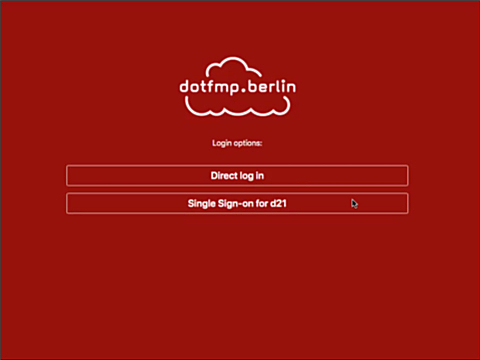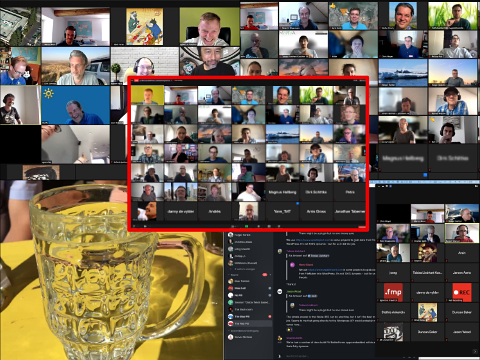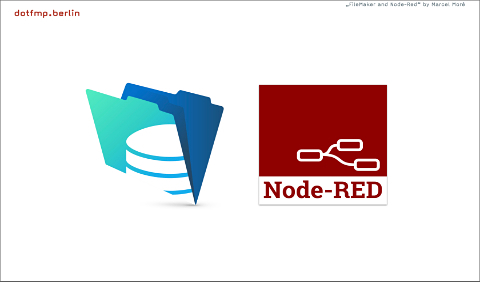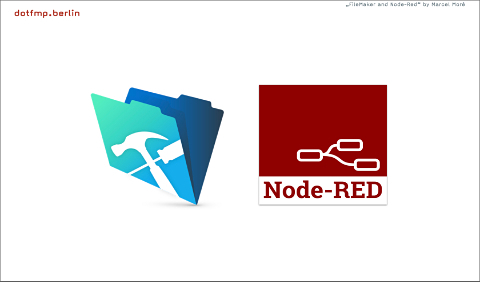After a years long felt period of standstill, something is happening with FileMaker. In several online events held in quick succession in April and May, Claris concretized its new product strategy and announced further fundamental changes.
Keeping up
It had been apparent for some time that something needed to happen. The FileMaker product line, which had proven itself for three decades of developing custom workgroup applications on the desktop, was in danger of missing the boat. The cloud era has long since begun, and more and more use cases are migrating to the Web, where new diverse services are vying for users’ favor.
But even the cloud does not offer answers for every situation. Data should be available everywhere, but not all tools can be easily replicated in the web browser. In addition, everyday life is increasingly determined by mobile devices and simple apps. Workflows are breaking down into increasingly detailed individual tasks that are to be completed by different users at different locations. At the same time, the complexity behind the scenes is growing. It is an enormous challenge for developers to master this balancing act and continue to keep up with relevant technologies without losing their investments in projects that have grown over many years.
More words than actions
After what feels like an eternity, Claris is now letting the cat out of the bag. Some things had already leaked out after the change in leadership in 2019, and numerous shiny Powerpoint slides were shown since. However, a coherent strategy with technically reliable specifications did not really emerge for a long time. Even with the new announcements, Claris initially misses the opportunity to really clearly communicate the whole picture. To make matters worse, all existing products and even the new services are being “rebranded” once again, and it is difficult to keep track of everything in the flood of marketing terms.
Not only the products get new names. Claris is also constantly coming up with new names for communication with users, customers and developers. What was once the “Claris Solutions Alliance” is now simply called “Claris Partner” after several renamings. A new addition is the limited license program “Problem Solvers Circle”.
After all, Claris is making much more of an effort than before to address the community directly and is trying to communicate with partners and developers on an equal footing. In order to meet the demand for more transparency, Claris recently published important announcements very promptly and uncut on its own YouTube channel. Fortunately, Claris’ internal developers take center stage and answer questions from the community very directly, in addition to marketing speech.
FileMaker is history
No question: The rebranding is certainly an important step! After all, the ultimate goal is to position the company’s own products well for the present and the future and also to attract new developers and users. The name “FileMaker” was too much linked to its past – a somewhat dusty image that no longer corresponded to the actual possibilities of the platform.
After all, FileMaker is one of the few “rapid development” tools that can be used to develop customized applications (a.k.a “apps”) across operating systems. There is currently no other tool that can be used to create and distribute desktop applications as well as apps for the iPad or iPhone as quickly. Furthermore all data can be accessed flexibly either on a company’s own server or alternatively via a cloud server that can be accessed from anywhere. This alone is a strong argument in favor of the platform, but so far it has hardly been effective beyond the horizon of the die-hard FileMaker scene.
If Claris wants to score here, a new appearance with a fresh external image is certainly a reasonable approach.
A guide to the new world
So it’s high time to take a sober look at the Claris universe and classify the announced innovations from a technical and strategic point of view!
The most important things in advance:
- FileMaker remains as the core of the platform, but gets a new name. FileMaker Pro” will become “Claris Pro”, “FileMaker Go” will become “Claris Go” and “FileMaker Server” will be called “Claris Server” in the future.
- The platform is supplemented by a new cloud product “Claris Studio”, in which the previously announced components “Claris Connect” and “FileMaker Next” grow together.
- Behind the scenes, a new database engine based on MongoDB ensures that all products and services can exchange data with each other. A process internally called “ESS+” integrates the new data layer directly into FileMaker’s relationship graph, as was already known from external data sources in the past.
- In the future, a central user administration is to be provided in the Claris Cloud, which will also control the licensing of the products. What is new here is the announcement that the future license model will only be offered as a complete package for all products and services. This means that anyone using the Claris platform will automatically have access to all the technologies included.
- In addition, Claris is expanding the licensing model to include free access to web forms by external users, as well as a “freemium” option that allows unlimited use of FileMaker as a standalone version without a server connection. This is remarkable in several ways! First, it significantly lowers the barrier to entry for new users and developers, who can now familiarize themselves with the capabilities without risk. For some developers, it might also potentially solve the dilemma of no longer having a runtime version of FileMaker. In the future, everyone should be able to install a FileMaker full version for free from the Appstore or via download link for Mac and Windows.
FileMaker Pro Roadmap
During the Claris presentation at the end of April, concrete announcements were made regarding the further development of FileMaker Pro.
Version 19.5 is said to contain over 400 bug fixes. In addition, significant improvements in terms of performance and stability are said to have been implemented. The Linux version of the server offers support for Ubuntu 20.04 and Ngnix as well as parallel backups as a new feature. On the client side, “Live Text” and “QR Codes” are supported under macOS and iOS.
A later version 19.6 should also allow up to 1000 simultaneous users on the server, bring user group management for OAuth and the possibility to use the “Login with Apple”. Furthermore “Script transactions” are planned as a new feature.
In the course of the presentation of Claris Studio, it was pointed out that a version 20 will be released parallel to version 19. However, this does not differ in the range of functions but marks the changeover to the new platform license under the name “Claris Pro”. The only technical difference, according to the announcement, is that the use of FileMaker client requires a login in the Claris Cloud with a “Claris User ID” to access the data connection to Claris Studio.
Claris Studio
The new product is designed to pave the way for making Web-based workflows more easily accessible. Claris places the “Studio” as a tool to provide dashboards and online forms. It is said to be possible to directly access existing data from FileMaker, or to feed data captured via Web forms directly into a FileMaker solution.
For the first release of Claris Studio a form editor with basic functions is planned.
In edit mode, custom forms can be quickly and easily clicked together directly in the browser. Predefined elements allow free text input, selection lists, formatted address fields for postal address, telephone number or eMail as well as special fields for date and time input. The forms can also be structured with separators and a customizable header area. For the graphical design, own graphics or logos can be embedded.
The form can be submitted via a submit button. If several forms are linked, buttons appear for navigation between the individual pages.
For all inputs, data records are generated in the background, which are stored in a table of the respective module (called “hub”). Through the “ESS+” data interface, these tables can be integrated directly into the data model of a FileMaker solution as an external data source. The synchronization between FileMaker and Claris Studio is to take place automatically in the background.
Once a web form in Claris Studio is ready to deploy, it can be distributed as a link. When a user opens the link, he lands directly on the form in the browser and can enter data there. Thanks to the flexible layout modules, the layout of the form automatically adapts to the display size of the given device.
In the first version, the web forms support only simple basic functions. Later, support for multiple languages and more flexible settings and layout options will be added.
The control of entire workflows with the help of Claris Connect as well as the creation of dashboards will probably be reserved for a later version. Claris wants to listen to the needs of users and developers here and align the priorities for further development accordingly.
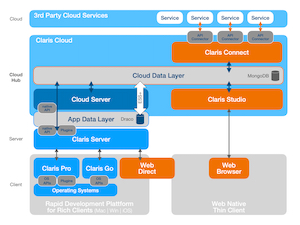
Under the Hood
Some things sound confusing at first and you have to realize that “FileMaker” and “Claris Studio” are actually two different products. They can be used independently, but they can complement each other perfectly.
Also the demarcation to “WebDirect” seems not quite clear at the first moment. But if you look behind the technical scenes, it quickly becomes clear where the fundamental differences are to be found.
FileMaker as we have known it so far is a “rapid development platform” for applications on so-called “rich clients”. These are very deeply integrated with the underlying operating system and offer numerous interfaces for data and documents as well as a plug-in architecture to enable special applications. However, the very broad field of possible use cases was bought with the necessity of first having to license and install the respective client application before it could be used. With WebDirect, Claris attempted to break down these narrow limits and to reproduce the “rich client” experience as identically as possible in the web browser. What remained was the licensing hurdle, which prevented certain use cases.
In contrast, “Claris Studio” relies on flexible and open access via the web browser. Existing and also new users are to be given access to data and processes very quickly and without software installation. This is made possible by providing an independent data layer in the cloud together with the option of creating prefabricated processes on the cloud platform. As far as possible, there should be no hurdles for the user. Everything technical and the license requirements are solved in advance behind the scenes.
The whole thing is now interesting because Claris has created a technical basis for linking the old and new worlds. Direct access to shared data storage elegantly opens up paths that previously had to be solved, in part very laboriously, via dedicated API access to the cloud.
If you compare the individual components in a diagram, you can see that a consistent platform can now be developed across several levels of integration. With the “Claris Cloud” – as a hub between local applications, cloud applications and external services – there are in principle a lot of possibilities to design or expand applications according to requirements. The right path (or even several paths) can be made available to the user for every use case.
The core is the new database in the cloud based on MongoDB. With this powerful engine, Claris creates the prerequisite for linking all products and services in a meaningful way. How well the mapping and synchronization to FileMaker’s existing data layers will work in individual cases remains to be seen. However, the approaches visible so far look promising.
If Claris sets the right course here and also provides us developers with the appropriate tools, this could become a real game changer in the long term!
In particular, if Claris simplifies the integration of third-party services through the close integration with “Claris Connect” as a workflow platform in the cloud, a lot of new options will suddenly open up, from which many existing FileMaker applications can also benefit greatly. There is no question that the platform opens up new application possibilities right from the start.
Conclusion
We will certainly have to be patient until then. According to the announcement, the first release of the new platform is planned for September 2022. Refinements are to be made step by step thereafter. It is also not yet known what changes the new licensing model will bring for existing installations. After all, Claris has to pay for the investments in new technologies. It remains to be hoped that many new customers will recognize the potential of the opportunities it offers and that Claris will be able to tap into additional sources of revenue from a growing user base. Otherwise, it is quite conceivable that existing customers will have to dig deeper into their pockets in the future.
At the bottom line it’s pretty obvious that the new strategy could work. Claris has reiterated in recent announcements that existing solutions will continue to be fully supported. With the new features and the opening of the licensing model towards the “freemium version”, Claris makes the platform attractive for new developers, users and purposes.
If this integration of old and new succeeds technically and communicatively, Claris can catch up with the cloud age with a contemporary portfolio. Admittedly, the field is fiercely competitive and some players are already in it with solid tools. However, it is perhaps this rather rare combination of powerful “rich client” applications and flexible “thin client” access that enables Claris to play to its diverse strengths in very different disciplines.
Sources and further information:
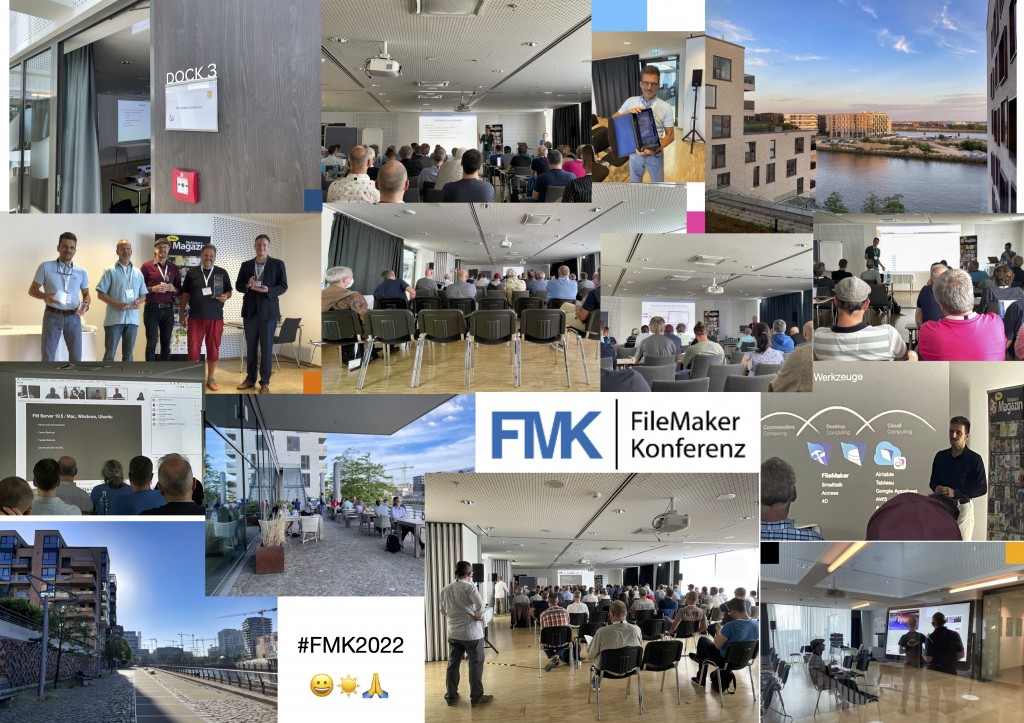
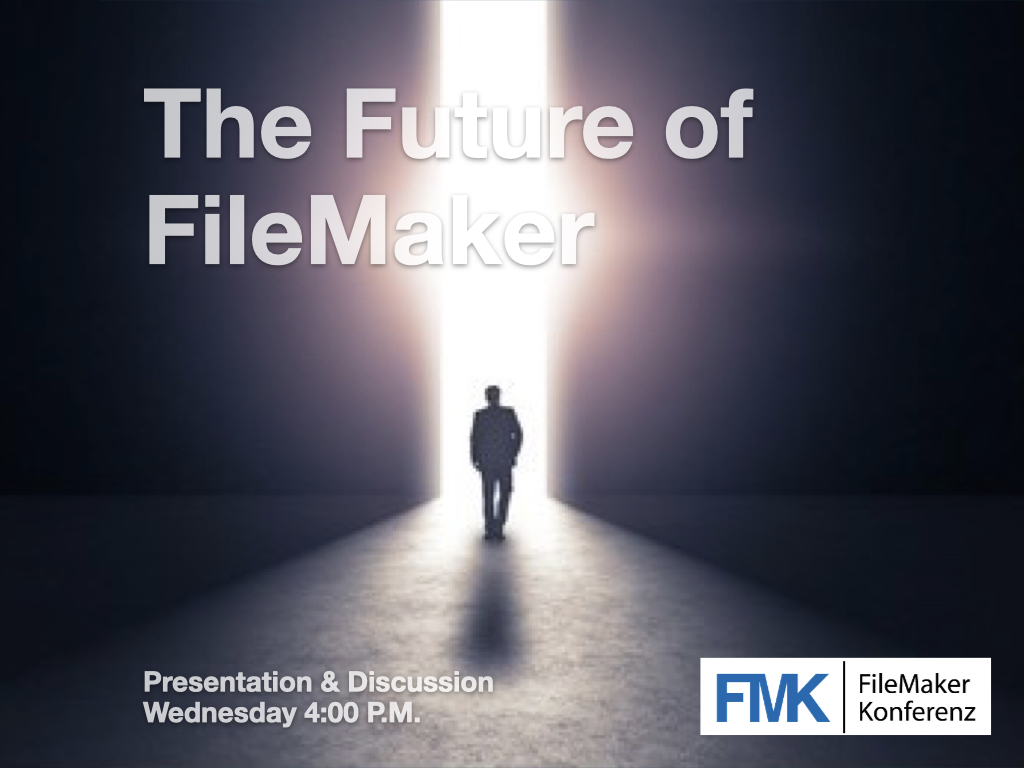
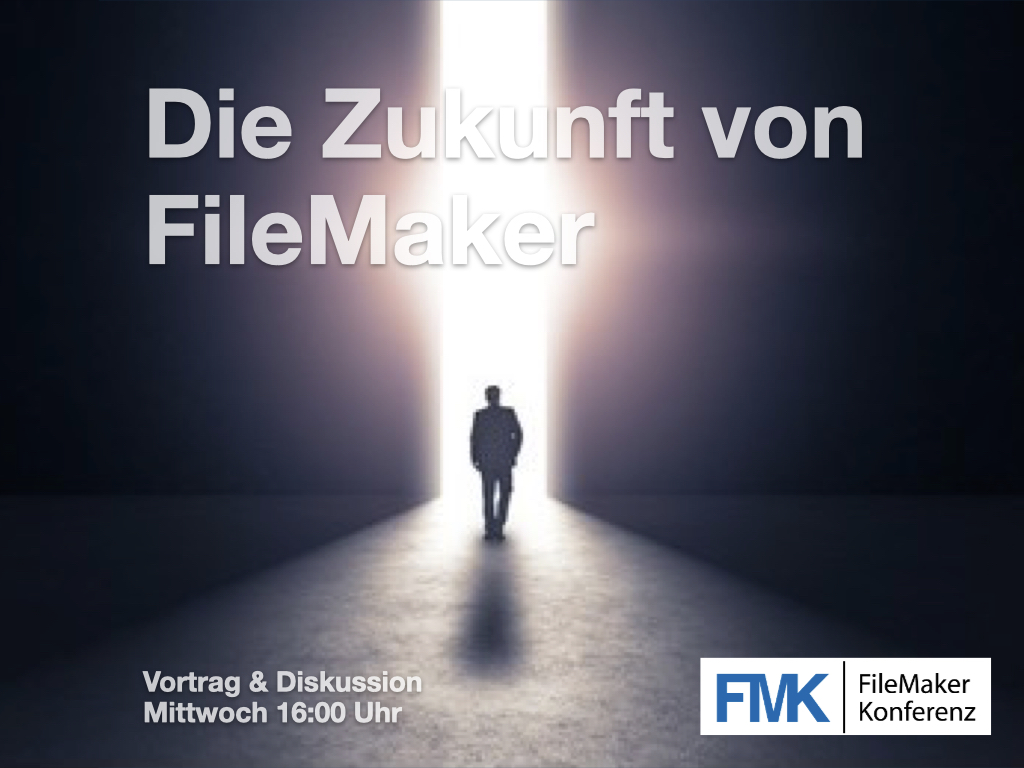

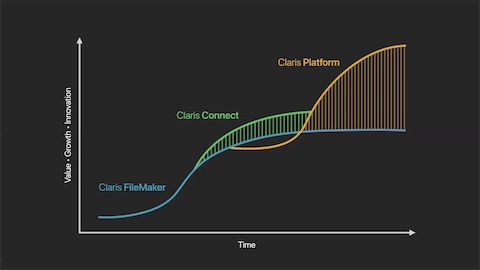
 Since FileMaker Server is available on Linux there have been some different approaches to install a Server instance on a local machine for developing purposes.
Since FileMaker Server is available on Linux there have been some different approaches to install a Server instance on a local machine for developing purposes.